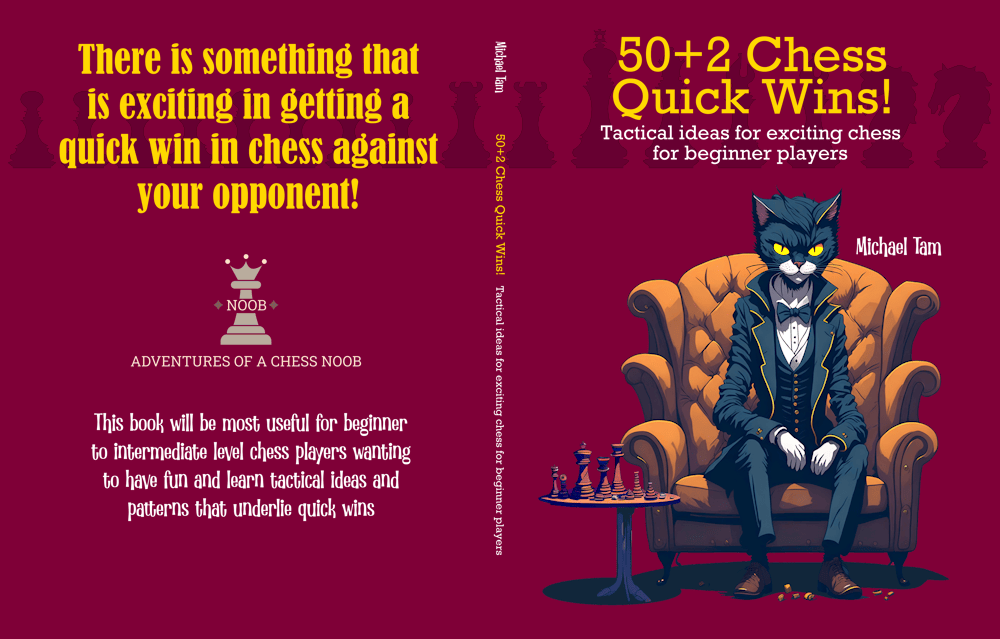
PERFECT Knight + Bishop Checkmate | GREAT BEGINNER VISION! ⚡ Quick Wins #84
#ruylopez #beginners #quickwins
chess noob Quick Wins! is a series of short videos, to demonstrate very quick wins! As a beginner, you become aware of the Scholar's Mate and the Fool's Mate, but neither of these show up in real games. However, there are tricky quick checkmates and wins that occur, even at the intermediate level of chess.
chess noob Quick Wins! is a series of short videos, to demonstrate very quick wins! As a beginner, you become aware of the Scholar's Mate and the Fool's Mate, but neither of these show up in real games. However, there are tricky quick checkmates and wins that occur, even at the intermediate level of chess.
Today's game is a very nice, 100% accurate 6-move quick win by checkmate from one of my Australian subscribers @JoshyThe4th. They are a beginner, with an ELO in the 300s at the time of this game. What I like about this game is that demonstrates well the advantage in keeping an eye out for opportunities when your opponent makes a mistake.
Firstly, a step back. From the outset, it might seem that quick wins shouldn't even be possible. After all, the game of chess begins in an equal position. I've received many comments that dismisses any value in learning quick win tactics as they rely on the opponent making a mistake or a blunder, something that isn’t under one’s control. The implied assumption is that there is only a single legitimate way of playing chess, and that focus on these tactics is invalid. I’ve argued elsewhere that this conceptualisation of “legitimacy” without an appreciation of one’s purpose and context of playing a game of chess is very incomplete, and frankly, ridiculous.
However, even if one chooses to accept the notion in a match that their goal is to play as accurately as possible, it’s important to realise that an opponent’s mistake or blunder is only notionally so until you take advantage of the error and make it real! A critical part of getting an opportunistic quick win is the mental agility to identify opening mistakes made by your opponent – some of which can be subtle. This is in addition and separate to the higher risk tactic of using tricky but suboptimal moves, which invites the opponent to making intuitive mistakes.
In this game, my subscriber with the White pieces plays the Ruy López Opening (1. e4 e5 2. Nf3 Nc6 3. Bb5). Here, Black has many options and perhaps a general lesson for beginners who opt to play into the very standard King’s Knight Opening with Black is that they need an approach to responding to the Ruy López. The most common and solid responses are the Morphy Defense (3… a6) and the Berlin Defense (3… Nf6). Those of you who follow my channel and blog will know that I prefer the Jaenisch Gambit (3… f5). Other alternatives include the Classical Defense (3... Bb5), Steinitz Defense (3... d6), Cozio Defense (3... Nge7), Bird's Defense (3... Nd4), and Gunderam Variation (3... Qf6).
In this game, Black played a mistake with the backward knight move (3… Nce7). As a general heuristic, moving the same knight for the second time in the opening, especially a backwards move, is not usually good unless it’s part of a defined line. In this game, Black hangs their e5-pawn, which is clearly bad.
As mentioned before, this is only a mistake if White takes advantage of it, which they did with (4. Nxe5!). If White didn’t capture the pawn and just developed normally, they are still better than Black, but loses a lot of the advantage. White now has a major advantage in initiative, with two pieces already in Black’s territory. Black plays a logical move with (4… c6) kicking away White’s Ruy López bishop. White slides the bishop to the c4 square, a great move as both the knight and the bishop attack Black’s weak f7-pawn. In fact, it’s a checkmate threat – a special pattern where a knight and bishop can provide checkmate in the opening!
As Black is also rated at around ELO 300, I’m not surprised that they didn’t see this pattern, and attempts to kick White’s knight with another pawn move (5… f6??), which doesn’t address the mate threat. This comes the next turn, move 6 – (6. Bf7#) – fantastic!
The great thing about this game is that it’s not a well-trodden trap line. Black’s (3… Nce7) was entirely unexpected. White’s vision and implementation of the attack tactics is what resulted in this very clean win. GG!
Game on chess.com: https://www.chess.com/game/live/107116744072



